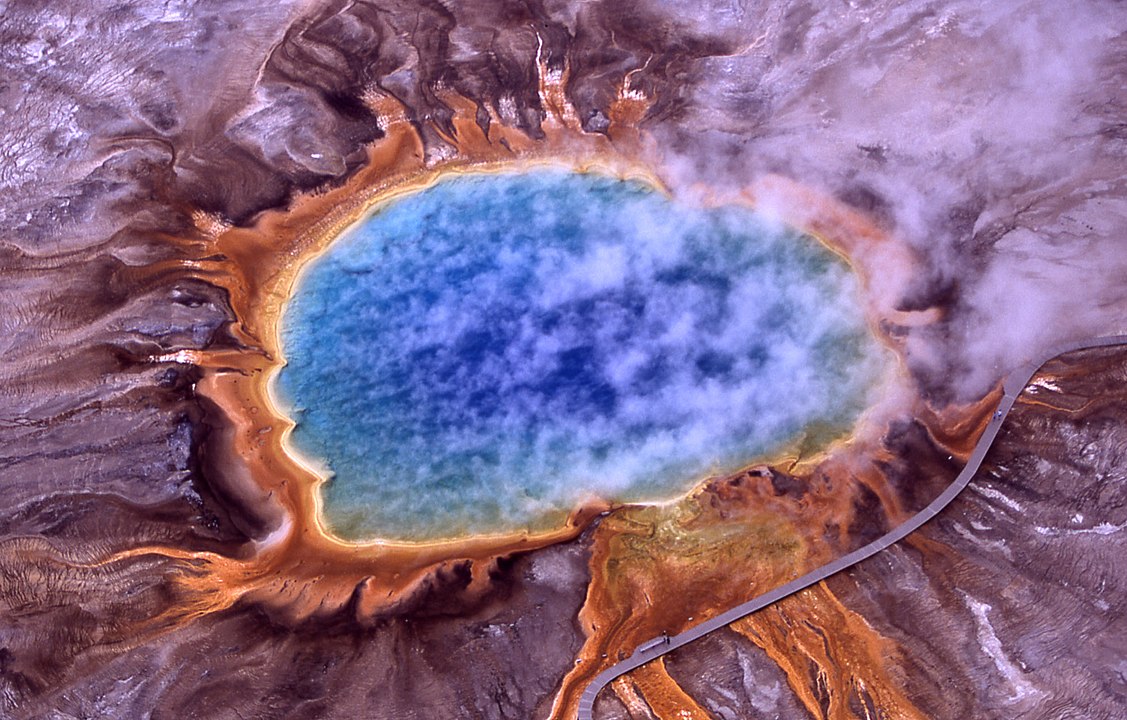
I learned this today. Different species of extremophiles have evolved different ways to survive the extreme environments that they live in.
The word extremophile comes from the Greek “extremus”, which means love and “philia”, which means love. They are organisms that not only survive in extreme environments they flourish in them. I learned about tardigrades the other day but they are only able to survive in extreme environments and they die eventually. Extremophiles wouldn’t survive in a less extreme place.
There are several different types of extremophiles. Generally, they can be divided into those that love environments that are extremely hot, cold, salty, acidic, alkaline, or dry. Some even live in more than one environment, and they are called polyextremophiles. They all have different abilities. Let’s learn about a few of them.
Organisms that thrive in high temperatures are called hyperthermophiles. There are bacteria called pyrolobus fumarii that live around hydrothermal vents at the bottom of the ocean. The temperature is about 110℃ and it is perfect for these bacteria. When the temperature drops below 90℃ they freeze. These bacteria are able to withstand these temperatures that would kill most organisms for a few reasons. They have evolved so that their DNA has a higher melting temperature. They also have more disulfide bonds, which stabilize their proteins. The high pressure they live at also helps them keep their cell structure together as well as stopping the water from boiling at the temperature it would on the surface.
Organisms that thrive at low temperatures do so by avoiding the growth of ice crystals within them. The biggest problem with freezing is that water expands when it turns to ice. This can rupture cells and cause irreparable damage. To prevent this, bacteria and organisms can produce antifreeze proteins. These proteins can bind to ice crystals and stop them binding together to make larger crystals. This lowers the water’s freezing point, allowing them to thrive at down to -18℃. Panagrolaimus davidi can survive at -80℃. They can survive even if 80% of their moisture freezes. They have a type of sugar that keeps their cell membranes from cracking. Another method is to live in extremely salty water. This also lowers the freezing point of water.
Organisms that live in salt have to find a way to overcome osmosis. They are called halophiles. When an organism is exposed to high salt concentrations, the salt draws water out of the cells. Fish overcome this by constantly taking in more water than they lose. Most bacteria aren’t able to do this, but bacteria that live in high salt conditions produce a high concentration of glycerol. This allows the cell to maintain osmotic pressure and keep its enzymes functioning. They make the glycerol from starch.
Organisms that live in high alkaline concentrations are called alkaliphiles and they thrive by producing their own acids. On the other end of the scale, acidophiles live in high acid areas and they thrive by either removing protons from their cells to keep their cytoplasm at a neutral pH or by evolving acid stability. Bacteria that survive in our stomachs would be a good example of these.
Organisms that live in incredibly dry conditions have evolved to be able to survive on tiny amounts of moisture. There is a bacteria called chroococcidiopsis which grows on the underside of rocks in deserts. There is just enough condensed moisture there for it to survive. It has been suggested as a possible way of colonizing Mars. It would be able to survive in the harsh Martian atmosphere and could slowly produce oxygen.
There are many more different organisms that live in other harsh environments, which only goes to show how amazing life is. These organisms are incredible, but they all have potential uses in industry that can help us.
The biggest use of these extremophiles is to clean up the world of toxic pollutants. They can survive inside the pollutants and digest them. There are extremophiles that can exist in high concentrations of metals, so they could be used to clean up contaminated water from factories. Heavy metal pollutants that are allowed to run into rivers are a huge problem in the developing world. These extremophiles could be a big help there. There are some extremophiles that can live in oil and they have been used to clean up after oil spills. They can digest the hydrocarbon molecules.
So, we may be trying to destroy our world, but there are organisms that can live in almost any environment and can potentially help us. And this is what I learned today.
If you read this far, I would appreciate a like and a follow.
Image By Jim Peaco, National Park Service – https://www.nps.gov/features/yell/slidefile/thermalfeatures/hotspringsterraces/midwaylower/Images/17708.jpg
Sources:
https://lco.global/spacebook/astrobiology/what-are-extremophiles/
https://www.frontiersin.org/articles/10.3389/fmicb.2019.00780/full
https://en.wikipedia.org/wiki/Extremophile
https://www.eurekalert.org/news-releases/765308
https://sciencing.com/examples-heatresistant-bacteria-20175.html
https://www.micropia.nl/en/discover/stories/microbes-in-the-cold/
https://www.thoughtco.com/extremophiles-extreme-organisms-373905
https://en.wikipedia.org/wiki/Alkaliphile
https://en.wikipedia.org/wiki/Acidophile
https://en.wikipedia.org/wiki/Extremophile
https://en.wikipedia.org/wiki/Halophile
https://en.wikipedia.org/wiki/Chroococcidiopsis
https://www.ncbi.nlm.nih.gov/pmc/articles/PMC7660605/
https://www.scientificamerican.com/article/how-microbes-helped-clean-bp-s-oil-spill/
https://www.ncbi.nlm.nih.gov/pmc/articles/PMC7660605/

